Cambridge Audio CXN100 vs MXN10: what are the differences between the two super streamers?
Two stellar Cambridge graduates, but which one suits your streaming needs?
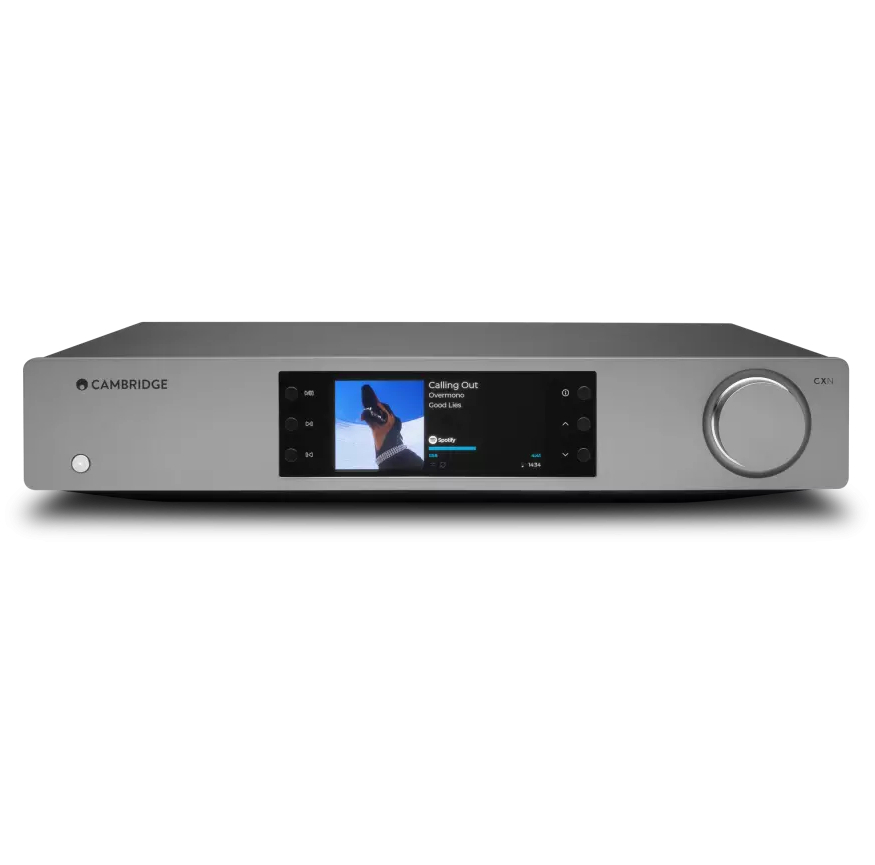
Streaming features: UPnP, AirPlay 2, Bluetooth 5.1, Chromecast, internet radio, Spotify Connect, Tidal Connect
Network: Wi-fi, ethernet
Inputs: USB Type A, USB Type B, optical, coaxial
Outputs: Optical, coaxial, balanced XLR, RCA line level
Headphone output? No
Max file resolution: 32-bit/768kHz PCM, DSD512, MQA
Dimensions (hwd): 8.5 x 43 x 30.5cm
Weight: 3.55kg
Sparklingly clean-sounding and built to Cambridge Audio's exacting standards, the CXN100 music streamer is a worthy successor to the legendary CXN (V2). Thanks to some new internal wizardry and acute attention to detail, the CXN100 sounds clearer, more precise and open than any rival at this price.
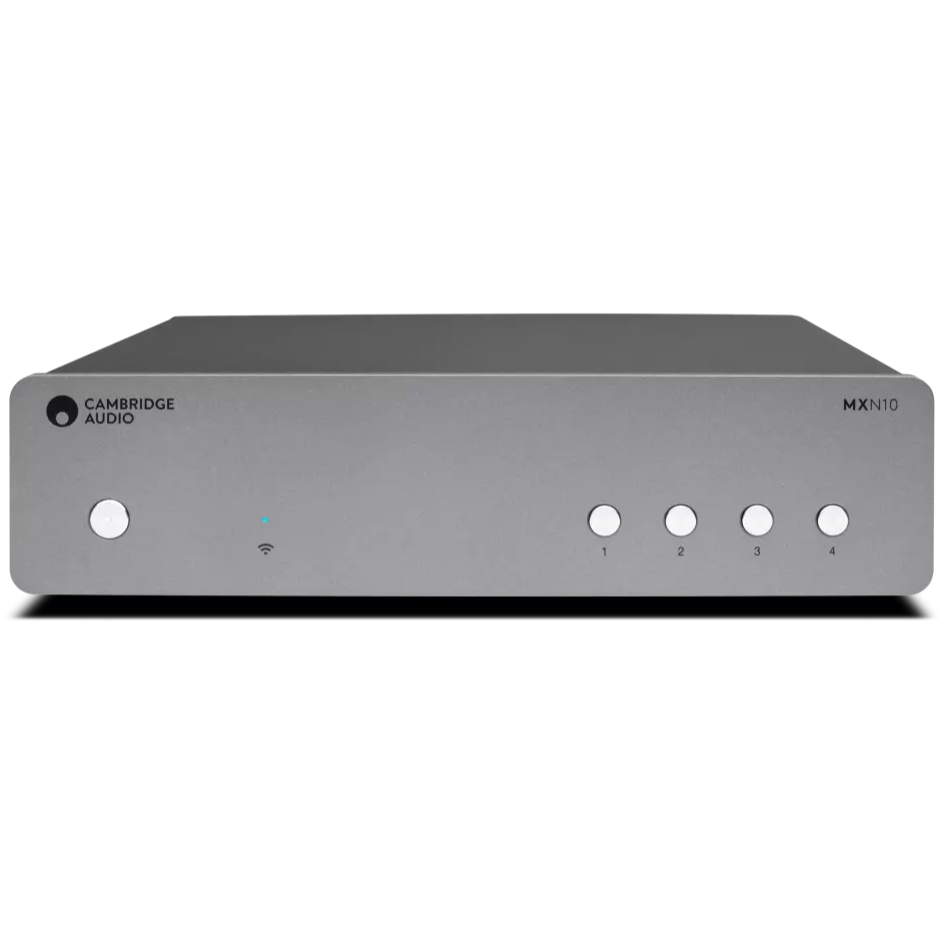
Streaming features: UPnP, AirPlay 2, Bluetooth 5.0, Chromecast, Spotify Connect, Tidal, Deezer, Qobuz, internet radio
Network: Wi-fi, ethernet
Inputs: USB Type A
Outputs: Coaxial, optical, RCA line level
Headphone output? No
Max file resolution: 32-bit/768kHz PCM, DSD512
Dimensions (hwd): 5.2 x 21.5 x 19.1cm
Weight: 1.2kg
The Award-winning MXN10 is bafflingly good value for money, trouncing similarly priced rivals in its weight class with its delightful musicality, appealing build and substantial feature set. In the realm of the compact, affordable streamer, the MXN10 is king.
Cambridge Audio's MXN10 is something of a mini marvel. Released last year, the compact and affordable music streamer trounced its comparable competition, taking the best elements of its competent rivals, bettering them, and then amalgamating everything into one delightful, Award-winning package.
It isn't the only streamer that we'd recommend from Cambridge Audio – far from it. We're comparing the MXN10 against the newer, larger and more costly step=up CXN100 music streamer, the sequel to the multi-Award-winning Cambridge Audio CXN (V2) and a model saddled with the burden of having some very impressive ancestry.
Cambridge Audio has been in sparkling form in this sphere for a good while now. Like JBL with Bluetooth speakers and Sony with headphones, the London-based brand knows how to make a lovely piece of hi-fi without costing consumers the earth, boasting an assortment of excellent CD players, amplifiers and network players, many of which have picked up What Hi-Fi? Awards during the last few years.
The MXN10 and the CXN100 continue this legacy by being very fine five-star players indeed, but they're distinct from each other in numerous key ways, chief among them being how much the two actually cost. This isn't a like-for-like comparison, let's be clear – more it's a case of finding which music streamer is right for your needs, budgets and preferences.
The budget brilliance of the MXN10 or the more high-end highlights of the shiny new CXN100? Let's find out which is the one for you.
- Read our full Cambridge Audio CXN100 review and Cambridge Audio MXN10 review
Cambridge Audio CXN100 vs MXN10: price
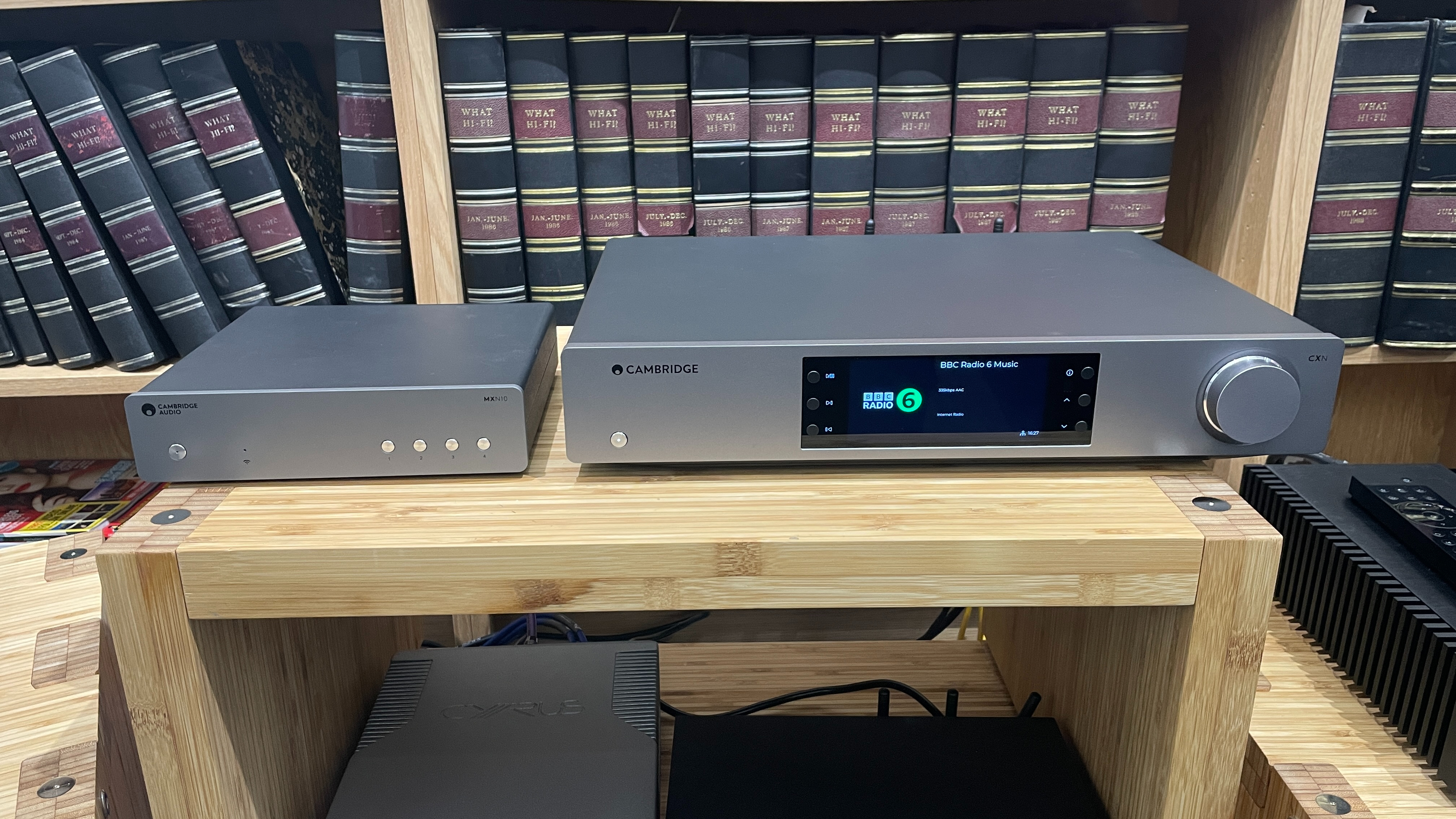
To reiterate, these two models are not swimming around in the same price pond.
We tested the Award-winning Cambridge Audio MXN10 at £449 / $499 / AU$899, a supremely competitive price that saw the eventual Award-winner undercut its main rivals – the Bluesound Node and the Audiolab 7000N Play – by a substantial margin. We haven't seen prices drop much since then, but even if they don't, the diminutive network player remains exceptional value for money.
The larger, more premium CNX100, meanwhile, will set you back a more significant £899 / €999 / $1049 – that's roughly a £450 / $500 / AU$150 difference from one model to the other. Considering that it only arrived in February of this year, don't expect major discounts any time soon, either.
If you're out simply looking for the most cost-effective streamer, the MXN10 is your go-to.
**Winner: Cambridge Audio MXN10**
Cambridge Audio CXN100 vs MXN10: build & design
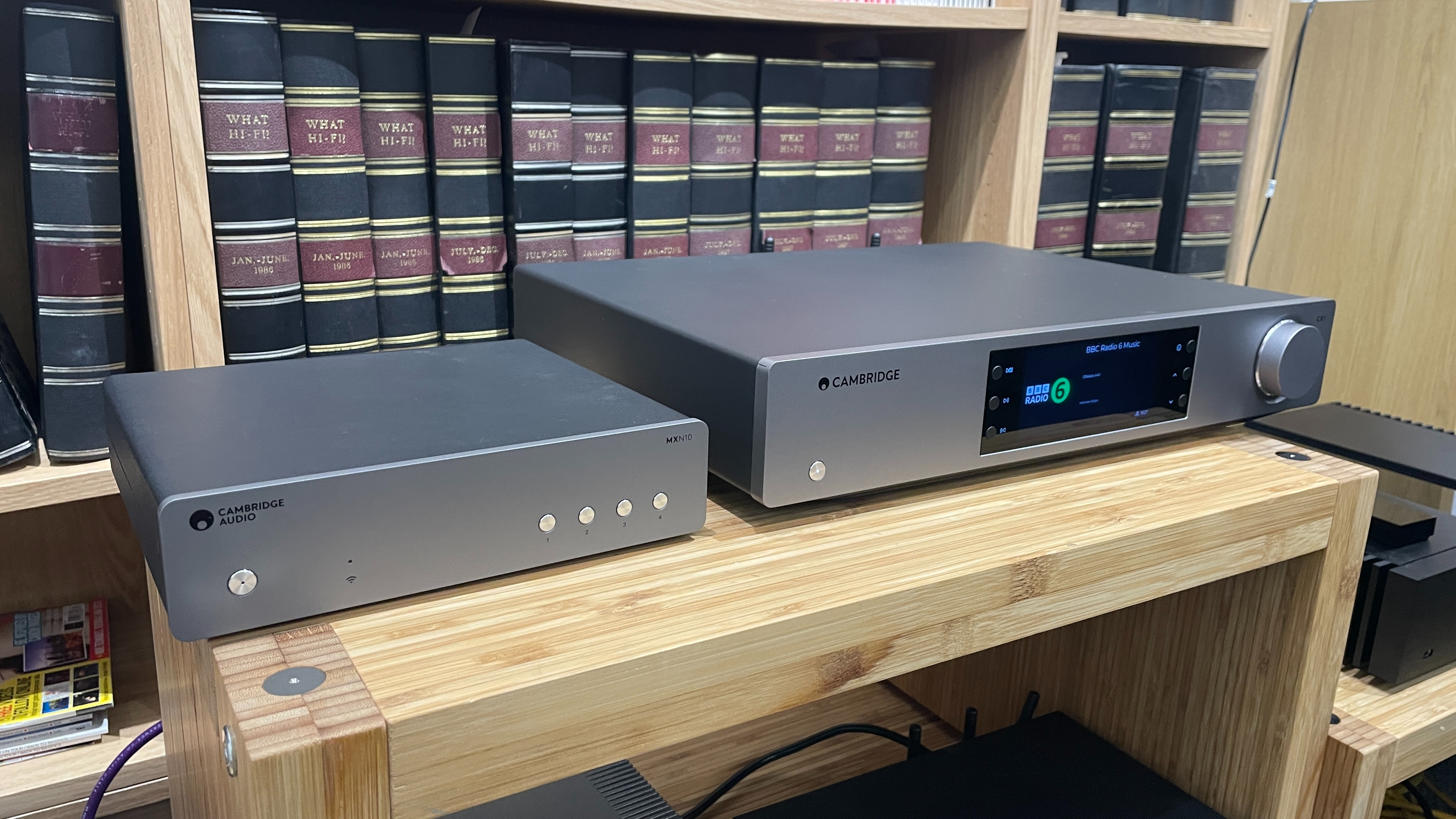
Despite the price discrepancy, the CXN100 and MXN10 are unmistakably Cambridge Audio products – they're sleek, nicely made and pleasingly understated, with both of our test models sporting clean, smooth "lunar grey" finished metal chassis and boasting the sort of refinement and seamless use case we've come to expect from the brand. Whatever your design preferences, it's tough to be actively offended by the understated looks of either.
They're a long way from identical, though. The MXN10 is a compact little thing, weighing just 1.2kg and sporting dimensions (hwd) of 5.2 x 21.5 x 19.1cm. The more expensive CXN100 is a more traditional full-width unit, and you could probably fit nearly two of the square-ish MXN10s into the rectangular form of the CXN100 (8.5 x 43 x 30.5cm).
Form and size aren't the only differences. The MXN10 is rather sparing when it comes to on-unit ornamentation, with four preset buttons on the right accompanied by a demarcated power button and a rather small white LED that indicates whether you’re currently connected to the wi-fi. Further, it doesn't come with a display or a remote control.
The CXN100, conversely, is more lavishly appointed, and the most noticeable difference is the front panel's full colour display that neatly and brightly shows off album artwork, track name and file sampling rate (amongst other information). Button-wise, you get responsive ones for play/pause, track skipping and up/down menu select buttons, all of which are situated around that handsome display screen. As is the case with the MXN10, there's no remote handset included in the box, so get ready to whip out your phone or tablet and use the provided StreamMagic app for full control of your sources and music. The app is responsive and works well. We don't find it to be quite as intuitive as using streaming apps like Tidal natively, but it's certainly a comprehensive and navigable platform that makes using both streamers a breeze in daily use.
The higher-quality components integrated into the CXN100 are designed to push the sonic capabilities beyond those of the more affordable model. The CXN100's power supply is billed as an evolution from the CXN V2, providing separated and isolated outputs for digital and analogue stages – the MXN10 only uses a single output power supply. Further, the CXN100 incorporates multiple linear regulators within the analogue stage, whereas the MXN10's design is simpler in tandem with its lower price.
Size isn't what matters here, but that display, coupled with enhanced internal wizardry, is. Higher quality components and greater accessibility set the CXN100 apart from its smaller sibling, so it has to take the prize here.
**Winner: Cambridge Audio CXN100**
Cambridge CXN100 vs MXN10: features & connectivity
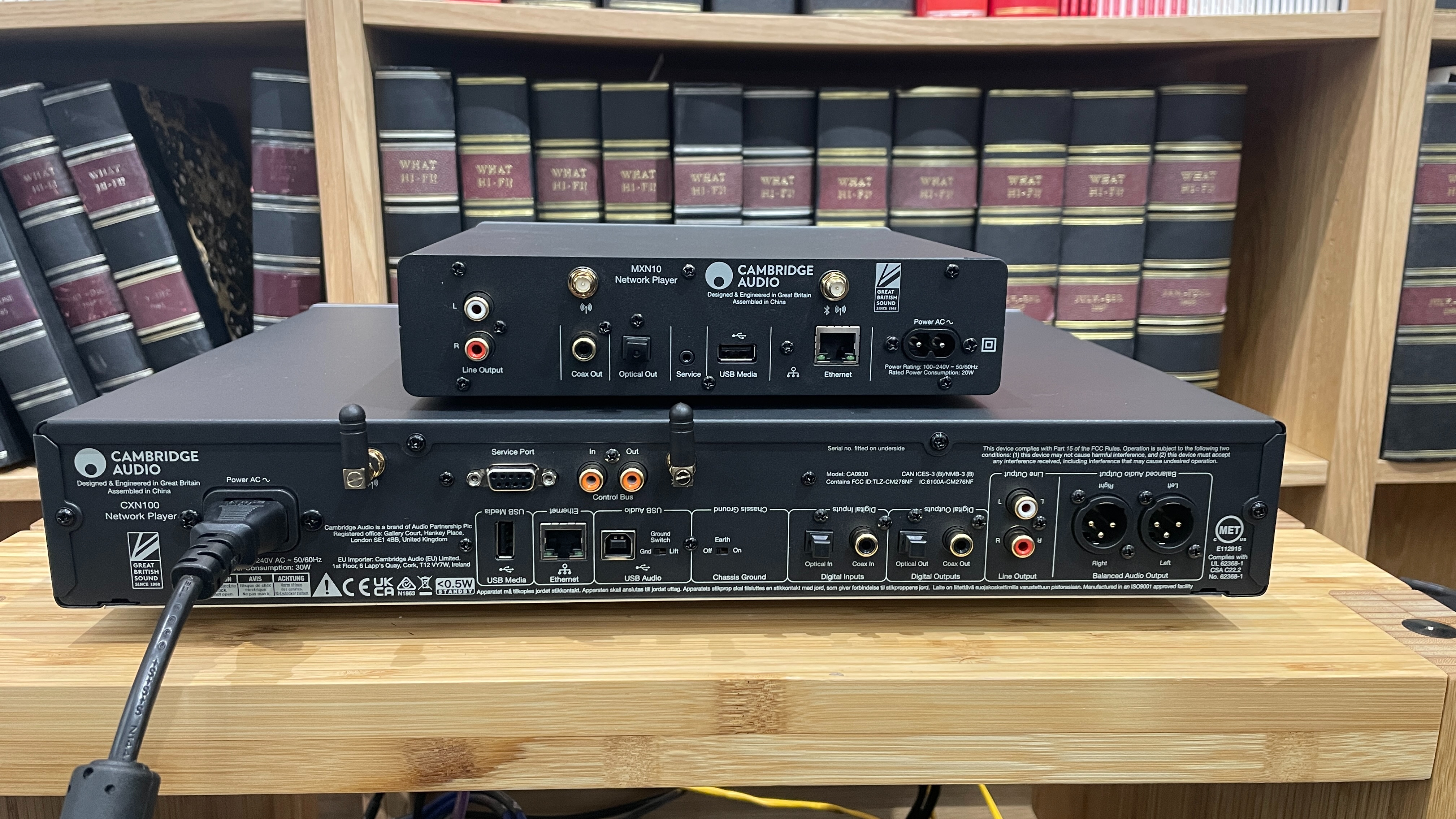
Let's move on to the fun world of connections and features. The larger CXN100's back panel sports single digital optical and coaxial inputs, USB type A and USB type B ports, as well as single optical and coaxial outputs. For the analogue connections, you've got balanced XLR and RCA line-level outputs.
The MXN10's offering is sparser than the CXN100: you get coaxial, optical and RCA line-level outputs, and one USB type A port. That's it.
At the heart of both streamers is Cambridge Audio's fourth-gen StreamMagic streaming module, so it's not surprising to see many of the same streaming methods and services supported on both. But there are some differences.
The CXN100 is packed with extensive streaming smarts including UPnP compatibility and Bluetooth 5.1, plus support for AirPlay 2, Chromecast, Tidal Connect, Spotify Connect, Deezer, Qobuz and internet radio. Naturally, you can access local files stored on a connected NAS device, and you can connect it to the wi-fi or use the wired ethernet port.
Internally, the CXN100 has received what Cambridge stated is a full redesign, with a new DAC chip – the ESS ES9028Q2M SABRE32 – replacing the two Wolfson WM8740 24-bit DACs used in the outgoing CXN (V2). Cambridge claims that the ESS DAC chip's timing filter is so good that you won't even need post-DAC filters or EQs, designed to retain the original signal and sound of a given recording as much as possible. Thanks to its shiny new DAC, the CXN100 can cope with hi-res files up to 32-bit/768kHz PCM, DSD512 and even natively play MQA.
Moving over to the smaller MXN10, the streaming service banquet offers a similar array of choices including UPnP, Google Chromecast, AirPlay 2, Spotify Connect, Tidal, Deezer and Qobuz, as well as support for Bluetooth 5.0 and internet radio. It can also locate and play any music file stored on the same home network, such as from NAS devices.
The MXN10 sports a different ESS Sabre ES9033Q DAC, allowing it to stream high-resolution files of up to 32-bit/768kHz PCM and DSD512 resolution, but it isn't able to decode MQA natively. So while it isn't quite on the CXN100's level, you'll be hard-pushed to find hi-res files that the MXN10 can't fully support. The lack of native MQA support for Tidal Masters is a shame, and while it's far from a dealbreaker, it remains worthy of note.
**Winner: Cambridge Audio CXN100**
Cambridge CXN100 vs Cambridge MXN10: sound

While they may share numerous similarities in aesthetics and streaming features, there are subtle differences in sonic character between the two streamers. As we've seen above, both players have different internal circuitry (bar the streaming module), and the CXN100 boasts numerous technical advantages over the MXN10.
Let's start there, then. The CXN100's sonic profile is resplendently clean and refined, boasting a soundscape that feels spacious, open and immensely detailed. There's room for your music to flourish in a balanced landscape that never feels clouded or overly hemmed in. It's also terrifically precise with the edges of notes.
In classic hi-fi terms, the CXN100 is certainly superior in terms of detail resolution, soundstaging and tonal balance. As we stated in the review, "The CXN100 (has) a top end that strikes the right balance between smoothness and bite, and low-end notes that are tautly pulled. Its refinement means that we can punch up the volume to party levels without things getting messy or too fatiguing.”
The MXN10, meanwhile, has a slightly different character – something that became clear when we listened to a few tracks side by side to tease out the subtle contrasts between the two players. Major Lazer's Pon De Floor starts with nothing but syncopated percussion comprising predominantly drum hits and cymbal crashes, and when using the CXN100 we were struck by how open, detailed and well-organised the composition felt. Switching over to the MXN10 made everything seem more compact, forceful and focused, and while there’s less overall space and insight, there was also a greater sense of robustness and fun.
Loading up Elliott Smith's Between The Bars helped us further distinguish between these two slightly different sonic approaches. The CXN100 offered more detail and textural refinement, yet the intimacy and emotional connection upon which the performance hinges was much more evident through the richer tone of the MXN10. Smith's tracks should feel like private performances or personal confessions, something the smaller unit captured in a way that the more expensive model didn't as effectively convey.
The MXN10 is unquestionably less spacious, less precise and less refined than its bigger brother, yet it's just such an easy product to listen to. Whether it's conveying the emotional resonance of Max Richter's Never Goodbye, helping belt out the chorus of Jay-Z and Justin Timberlake's Holy Grail or conveying the thumping hip-hop beat of Wu-Tang's Gravel Pit, the MXN10 is masterful at getting to the heart of your music's, well, musicality.
**Winner: Draw**
Cambridge Audio CXN100 vs Cambridge Audio MXN10: verdict
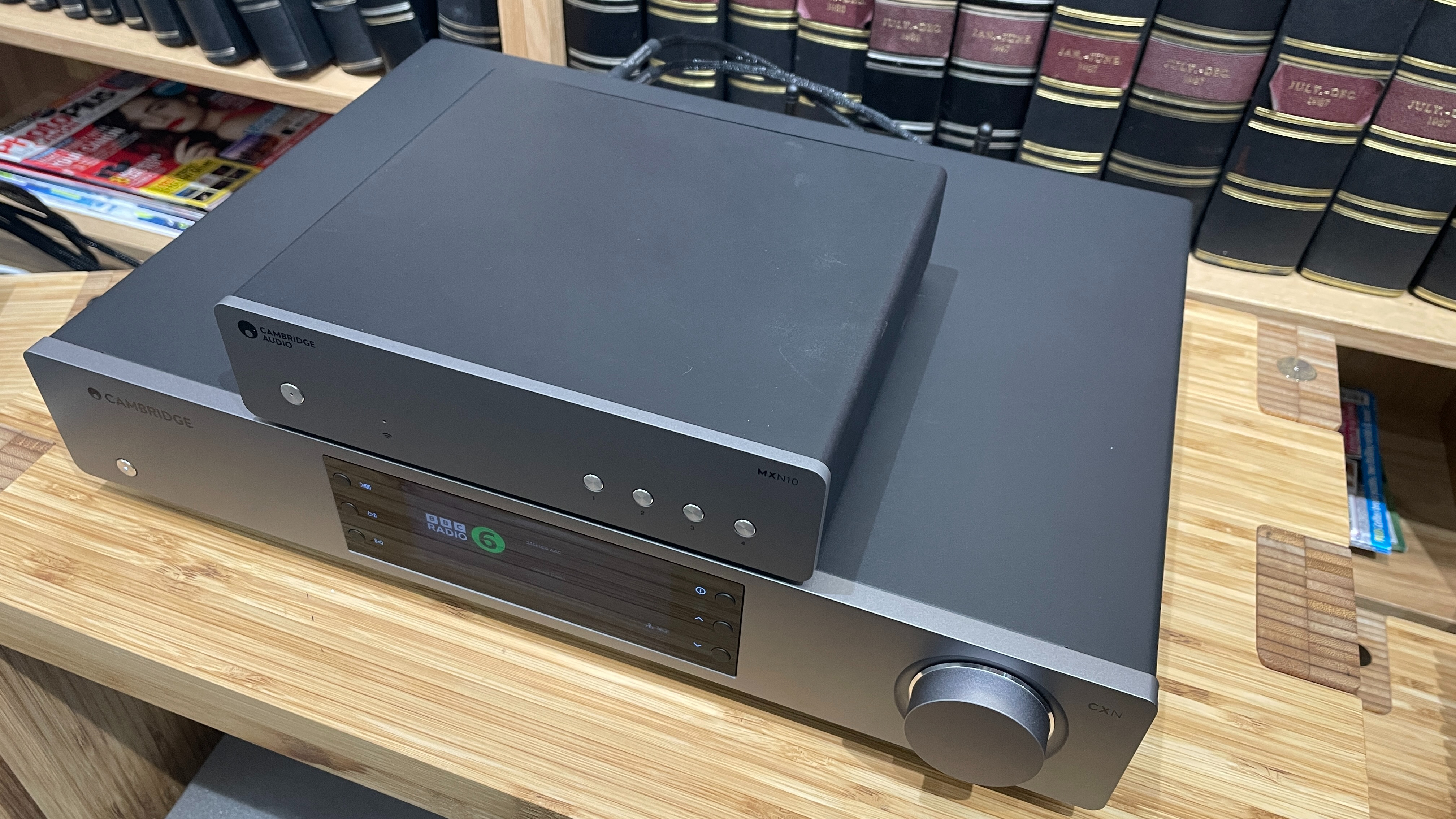
This is an interesting one. If we're basing our verdict purely on design and features, it's easy to recommend the CXN100 for its attractive on-unit display, higher-quality components, better specifications and greater range of connectivity options. Go bigger, go better, right?
Maybe... maybe not. Sonically, the CXN100 and the MXN10 aren't chalk and cheese, but there are subtle differences in how they present their sound that may influence your decision depending on your preferences.
The bottom line is this: the CXN100 is a better product in pure hi-fi terms thanks to its dedication to, as we’ve stated above, clarity, precision, soundstaging and detail. That said, the CXN100 is roughly twice the cost of the MXN10 and yet, from our perspective, it isn’t twice as good sonically. Thanks to its greater musicality, emotional resonance and sense of fun, the MXN10 is only just a shade behind – it’s certainly not “half” the musical performer.
Thus, if you really value pure hi-fi talent, the CXN100 wins. If you're looking at the much trickier mistress that is value, the MXN10 offers more of the “sound-per-pound” performance on which we assess all products at What Hi-Fi?. Judged by that metric, it’s the smaller, cheaper model that takes the metaphorical crown.
MORE:
Read our full Cambridge Audio CXN100 review
And our Cambridge Audio MXN10 review
Best music streamers: upgrade to a wireless system
Best hi-fi systems: micro, vinyl and streaming music systems for the home
Cambridge Audio CXN100 vs CXN (V2): the differences between new and old
Get the What Hi-Fi? Newsletter
The latest hi-fi, home cinema and tech news, reviews, buying advice and deals, direct to your inbox.

Harry McKerrell is a senior staff writer at What Hi-Fi?. During his time at the publication, he has written countless news stories alongside features, advice and reviews of products ranging from floorstanding speakers and music streamers to over-ear headphones, wireless earbuds and portable DACs. He has covered launches from hi-fi and consumer tech brands, and major industry events including IFA, High End Munich and, of course, the Bristol Hi-Fi Show. When not at work he can be found playing hockey, practising the piano or trying to pet strangers' dogs.
